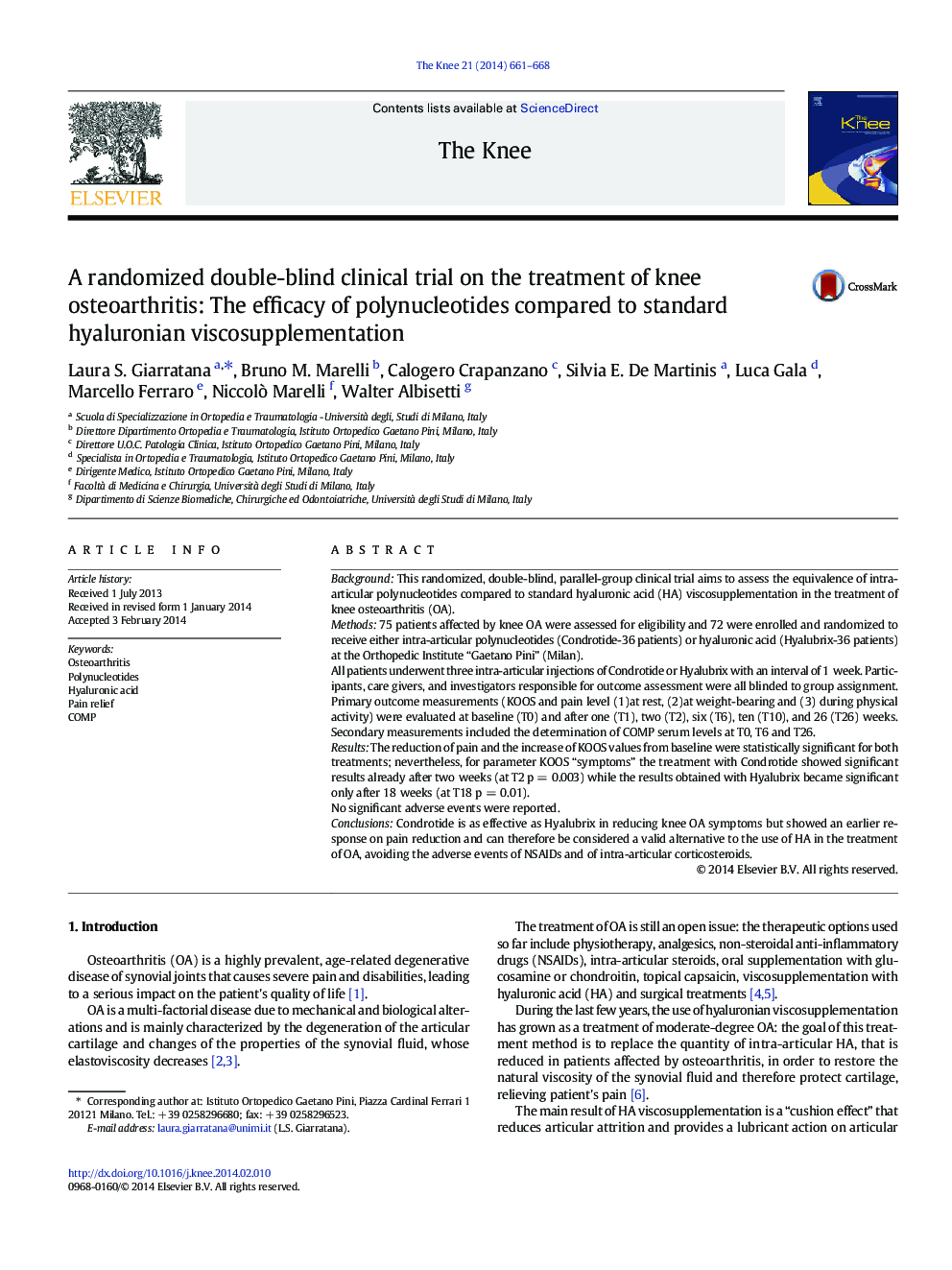| Article ID | Journal | Published Year | Pages | File Type |
|---|---|---|---|---|
| 4077454 | The Knee | 2014 | 8 Pages |
BackgroundThis randomized, double-blind, parallel-group clinical trial aims to assess the equivalence of intra-articular polynucleotides compared to standard hyaluronic acid (HA) viscosupplementation in the treatment of knee osteoarthritis (OA).Methods75 patients affected by knee OA were assessed for eligibility and 72 were enrolled and randomized to receive either intra-articular polynucleotides (Condrotide-36 patients) or hyaluronic acid (Hyalubrix-36 patients) at the Orthopedic Institute “Gaetano Pini” (Milan).All patients underwent three intra-articular injections of Condrotide or Hyalubrix with an interval of 1 week. Participants, care givers, and investigators responsible for outcome assessment were all blinded to group assignment.Primary outcome measurements (KOOS and pain level (1)at rest, (2)at weight-bearing and (3) during physical activity) were evaluated at baseline (T0) and after one (T1), two (T2), six (T6), ten (T10), and 26 (T26) weeks.Secondary measurements included the determination of COMP serum levels at T0, T6 and T26.ResultsThe reduction of pain and the increase of KOOS values from baseline were statistically significant for both treatments; nevertheless, for parameter KOOS “symptoms” the treatment with Condrotide showed significant results already after two weeks (at T2 p = 0.003) while the results obtained with Hyalubrix became significant only after 18 weeks (at T18 p = 0.01).No significant adverse events were reported.ConclusionsCondrotide is as effective as Hyalubrix in reducing knee OA symptoms but showed an earlier response on pain reduction and can therefore be considered a valid alternative to the use of HA in the treatment of OA, avoiding the adverse events of NSAIDs and of intra-articular corticosteroids.
